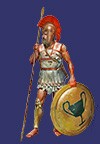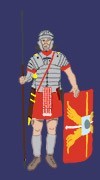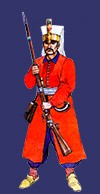
Kos Island is a large island located in the Aegean Sea very close to the Turkish Anatolian coast. It is the third largest island in the Dodecanese island chain, which is a group of 15 large and 150 small islands in the southeastern Aegean Sea, and the second most populated after Rhodes. It measures 45 kilometers in length and from 2 to 11 kilometers in width. Funnily enough, it is located just 4 kilometers off the Turkish coast.
The origin of the name of the island
Many ancient legends have been associated with the name of the Island. One legends has it that during the battle of Gods against giants (Greek mythology) in which the Gods prevailed, some giants took refuge from the persecution of Goods on the island of Kos, therefore the first names of the island “Kynnis” has been derived from the name of the giant Konnis while “Koia” after the giant Koio.
Another legend has it though that the Island got its name after the name of the king Meropas the second daughter, Koos or Kos. On the other hand, some research claim that the princess was called Astypalaia.
Ancient History
 According to historians, the island was inhabited as early as the 4th millennium BC. The first inhabitants were Prohellens, Pelasgians and Leleges. Other people such as Kares, Phoenicians and Cretans soon followed. Later on, following the tsunami wave caused by a volcanic eruption that caused the destruction of the Minoan civilization, the remaining Minoan Cretans arrived to Kos.
According to historians, the island was inhabited as early as the 4th millennium BC. The first inhabitants were Prohellens, Pelasgians and Leleges. Other people such as Kares, Phoenicians and Cretans soon followed. Later on, following the tsunami wave caused by a volcanic eruption that caused the destruction of the Minoan civilization, the remaining Minoan Cretans arrived to Kos.
In the 6th century BC, the island has been taken by the Persians. At the beginning, the relations with Persians have been amicable, but when the Koans refused to join the army with the intent to attack the continental Greece, they faced the all - out wrath of the Persian rulers so that they were forced to build five ships, which joined the Persian fleet. Following the Persian defeat at Salamis Plataea and the naval battle in Mycale, Kos together with other occupied Greek territories did away with the Persian rule.
In the 5th century BC, the island of Koss joins the Delian League, the coalition of Greek city-states that had the aim of fending off the Persian armies. Due to the greed for power of different city states within this coalition, a Peloponnesian war broke out in which the Koans sided with Athenians. This is the reason why the Spartan army arrived to Kos and plundered the capital city.
After the victory of the Spartans and the end of the Peloponnesian war, the island managed to rise again due to the trade.
During the rise of the Macedonian state, the Koans sided with the Philip (the father of Alexander the Great) first and then with Alexander the Great. During this period, the island continued to prosper while the population reached a staggering number of 160,000 people (today population is 33,000).
The Roman Period
 When Rome started to expand and assume more power, the island of Kos and Rhodes sided with Rome in order to fight against Philip V, the Macedonian King. The Romans triumphed in the battle of Kynos, Kefales.
When Rome started to expand and assume more power, the island of Kos and Rhodes sided with Rome in order to fight against Philip V, the Macedonian King. The Romans triumphed in the battle of Kynos, Kefales.
In 88 BC king Pontus, Mithridates seized the island, whilst in 82BC Kos became part of a Roman province complete with the surrounding islands.
Even though Tiberius granted Koans special rights (tax exemption and asylum), the island was terribly plundered, since it was deprived of its artistic heritage that was to embellish Rome shortly afterwards.
After the downfall of the Western Roman Empire, the island still remained within the Eastern Roman Empire.
During this period the island was plundered by Vandals, Visigoths, Arabs, Normans to name but a few. In 1160, the island was conquered by Crusaders temporarily. When in 1204, the Crusaders conquered the Constantinople under the rule of Papacy in which the crusaders’ army never reached the Holy land, but it conquered Constantinople instead and the accumulated loot shipped to most countries in Europe, the island of Kos became part of the Venetian Republic. In 1262, Eastern Roman Emperor Michael Palaiologos managed to reclaim the island, but it had to cede it to the Republic of Genoa soon afterwards.
In 1304, the Republic of Genoa sold Kos, Rhodes and other territories to the Saint John’s Knights of Jerusalem. The sovereignty of the Knights lasted 218 years. The knights were never appreciated by the local population.
The Turkish occupation and the modern period
 In 1523, Turkish Sultan Suleiman, after he had conquered Rhodes, managed to conquer also Kos. Even though the Koans demonstrated the fierce resistance, the island fell to Turkish rule. Following an agreement between the Turks and the Knights, the knights part and parcel left the island, whilst the Greeks had to face up to the wrath of the Turks. The Turkish occupation lasted for 390 years during which the population of the island drastically fell due to the famous and infamous Turkish methods of taking young children to be part of their elite military forces, torturing, executions etc.
In 1523, Turkish Sultan Suleiman, after he had conquered Rhodes, managed to conquer also Kos. Even though the Koans demonstrated the fierce resistance, the island fell to Turkish rule. Following an agreement between the Turks and the Knights, the knights part and parcel left the island, whilst the Greeks had to face up to the wrath of the Turks. The Turkish occupation lasted for 390 years during which the population of the island drastically fell due to the famous and infamous Turkish methods of taking young children to be part of their elite military forces, torturing, executions etc.
In 1821, Koans joined the Greek Uprising against the Turks, but sadly in its aftermath 92 noblemen were hanged right off the Hippocrates’ Tree as well as many others all over the island.
In 1912, Kos together with all Dodecanese Islands were placed under the Italian rule. The Italians pledged to liberate the islands from the Turks and were therefore warmly welcomed by the locals. However, Italians soon had a change of heart so they started oppressing the local population. During this period, 30 mosaics were taken from Kos, since Italians wanted to renovate the Grand Master’s Palace in Rhodes.
In 1943, during the Second World War, the island was taken from the Italians by the Germans. This brought on additional calamities to the local population. After the World War 2, the British Empire has taken over the island.
Finally, on March 7 1949, after the Treaty of Paris, the people from Dodecanese islands have joined with their countrymen and finally the Greek flag could be hoisted on the Greek turf.
Interesting facts
Kos is an amazing island for those who dare enjoy an adventure to uncover a very long history of the island, Mediterranean beaches, medieval fortresses, hidden thermal springs and lots more. Hippocrates, the father of modern medicine was born on this island five centuries BC. Due to its long and often violent history the island of Kos is also home to some stunningly beautiful medieval castles as well. Finally, some beaches are plain looking but beautiful still and will certainly make you summer holidays very enjoyable.
Crete is the fifth largest island in the Mediterranean and the largest among the Greek islands. The capital and administrative center is Irákleio or Heraklion located on the north coast. The gradually sloping northern coast consists of natural harbors and coastal plains, where capital cities such as Chania, Rethymnon and Heraklion are located. Sandy and pebble beaches line the coast.